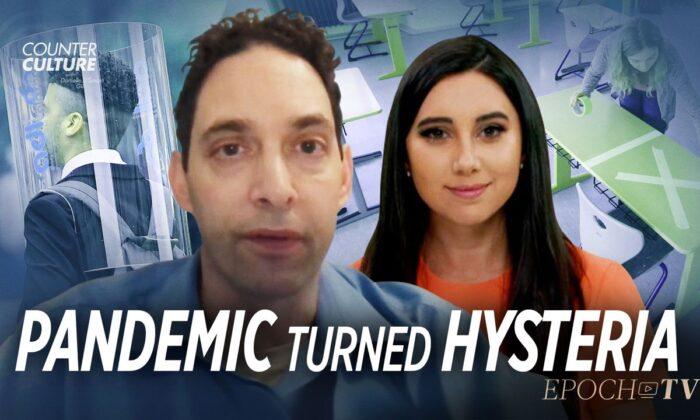It’s no secret that trust in the mainstream media has fallen to record lows within the last decade. Recent polls show a paltry 16 percent of the U.S. population currently trust televised news content to be giving them accurate information, while newspapers garner only 21 percent confidence in their reporting. Only Congress fares worse with the population when it comes to having “a great deal” or “quite a lot” of confidence in their abilities. It isn’t even a secret to most Americans why that is, though members of the journalism elite remain baffled as to just why so many people are turning away from traditional news sources toward online, independent journalism.
Those flummoxed journalists would do well to watch the 10th and final episode of the first season of “Kash’s Corner,” as it lays out exactly where the mainstream media has gone so terribly wrong. “Misinformation, Disinformation, and the 7 Biggest Media Failures in Recent Memory” is something of a marvel, not only because Kash Patel and Jan Jekielek manage to whittle down the laundry list of the media’s untruths in the past few years to just seven misleading news narratives, but because they manage to review their list so calmly.
Mainstream journalists won’t watch this episode, of course, as it might risk the discovery that the journalists themselves are the problem, and that if they want to find the source of the dreaded “misinformation” and “disinformation” we hear so much about, they need look no further than the bathroom mirror. It is therefore necessary for everyone else to watch it and to share it far and wide.
The stories chosen in this episode are all well known and anyone with a left-leaning family member or friend will likely have engaged in more than one fruitless attempt to point out the truth behind the narrative of at least one of them. Patel and Jekielek are able to discuss these instances of media spin and cherry-picking in a way that remarkably takes the heat out of the conversation to keep everybody’s blood pressure down. In the last decade, respondents having “a great deal” or “quite a lot” of confidence in newspapers dropped from 38 percent to the current 21 percent, and television news has plummeted from 27 percent to 16 percent due unequivocally to their own disinformation and misinformation campaigns. After discussing the tanking confidence in the media, Kash Patel and Jan Jekielek discuss seven specific examples of the media fibbing in order to support the overall “orange man bad” narrative that has taken hold of journalism like a rapidly metastasizing cancer since the 2016 election and is the reason behind this rapid decline in confidence.
First, however, Patel and Jekielek briefly outline the difference between misinformation and disinformation, a handy primer with the current administration openly working with social media platforms to weed out what they deem to be the former. “Misinformation” is information that has been incorrectly reported and shared. This is generally done out of ignorance and not with any intent to mislead. When the story of the Covington kids spread like wildfire without anyone waiting for the entire series of events to come to light, that was an example of misinformation. People saw a 30-second video clip, took the media at its word, and after hitting the “share” button, coalesced into a furious mob dead set on destroying a teenager without the full context.
“Disinformation” is the intentional sharing of misleading information while knowing it is not the entire story for the sake of setting a narrative. The people, often the media, sharing the story know it isn’t true or is not the full story, but they share it anyway because it supports their worldview. Continuing to share the story of the Covington kids after the footage of the Black Hebrew Israelites became public and it was revealed nearly everything Nathan Philips said was a lie (including being a Vietnam veteran), while insisting Nick Sandmann was a white supremacist because of his MAGA hat and his smile, is disinformation. It was a deliberate shift in the narrative to continue propping up a false claim for the sake of furthering the belief that the greatest threat to the United States currently is white supremacy.
Kash Patel and Jan Jekielek leave Sandmann out of their list, but the stories they cover will still be very familiar to anyone who has escaped the mainstream media’s grasp in the last decade or so and begun to seek the truth behind the narrative. It’s worth revisiting these stories anyway. They begin with the “very fine people” lie that persists to this day and was so widespread as to be asked about during the 2020 presidential debates.
The next instance of media malpractice Patel and Jekielek tackle is the idea that Brett Kavanaugh was a drunken serial rapist with a string of assaults under his belt. Somehow none of his alleged assaults were made public knowledge until he was nominated to the Supreme Court, but that didn’t stop the mainstream media from taking the story and running with it because it suited their narrative. Patel and Jekielek rightly point out that if the accusations had any veracity, the media should have continued the coverage of the supposed victims long after the Senate confirmed Kavanaugh. While there are still fringe elements of the left occasionally calling for Kavanaugh’s impeachment, those voices are largely confined to Twitter. The mainstream media recognized the story wasn’t worth pursuing once he was confirmed and moved on to the next narrative to push as evidence that Trump was “The Worst President Ever.”
Patel and Jekielek go on to discuss the Russian bounties myth, which proliferated while Patel was working at the Department of Defense with direct access to information that disproved the story; the military clearing of Lafayette Square for a photo op (never happened); and the possibility of COVID-19 being an accidental leak from a lab in Wuhan, China. In these last three stories, Patel provides personal insight into the thinking behind the scenes of the Trump administration and why those in the know did not come forward with irrefutable proof that the mainstream media’s take was a blatant falsehood. It would undoubtedly shock those on the left to discover that the Trump administration cared about the integrity of government organizations and did not want to politicize, for instance, the Department of Defense. If only the mainstream media cared half as much about integrity, their confidence rating among the public might not be in the toilet.
It isn’t likely that anyone with their head out of the sand will find many new revelations in this episode, but it’s still well worth watching regardless. Not only does it quickly and succinctly break down seven real instances of media misinformation and disinformation in the last five years, it also discusses them rationally, with nary a flared temper in sight. That should help anyone still fuming over the blatant media bias that is obvious to everyone outside of Washington and New York to cool down, and is ideal for sharing on social media with those left-leaning family members and friends who just won’t listen. Kash Patel and Jan Jekielek’s thoughtful, calm discussion of these stories might actually get through to one or two of them.
Follow EpochTV on social media:




